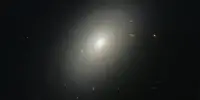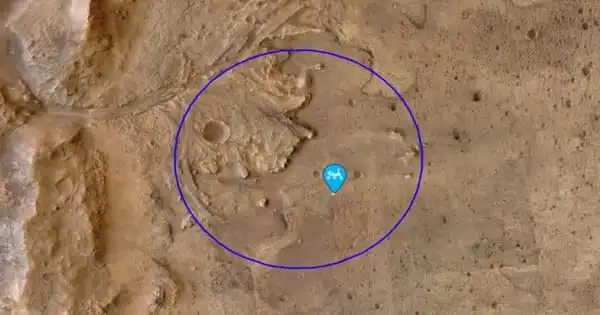NGC 346 is a young open star cluster with an accompanying nebula situated in the Small Magellanic Cloud (SMC) in the southern constellation Tucana. It is an open star cluster situated in the Small Magellanic Cloud (SMC), a Milky Way satellite galaxy. It is located in the southern constellation Tucana and is a conspicuous object in the night sky of the southern hemisphere.
James Dunlop, a Scottish astronomer, discovered it on August 1, 1826. It was characterized by J. L. E. Dreyer as a “bright, large, very irregular figure, much brighter middle similar to a double star, mottled but not resolved.” The multiple-star system HD 5980, one of the brightest stars in the SMC, is located on the fringes of the cluster.
Location
NGC 346 is located within the Small Magellanic Cloud, which is one of the Milky Way’s closest neighbors. The SMC is approximately 200,000 light-years away from Earth. This cluster is located towards the heart of the SMC’s brightest H II area, called N66. This is located in the galactic bar’s northeast region. Stellar scans have found 230 large OB stars in the direction of this cluster. 33 of the stars in the cluster are O-type, with 11 of them being O6.5 or earlier.
Description
NGC 346 is an open cluster, which means it is a group of stars that arose from the same molecular cloud and are only loosely connected by gravity. It is young in astronomical terms, with an estimated age of 5 to 25 million years. The cluster comprises a combination of bright, young stars that appear blue and cooler, older stars that appear redder.
The cluster’s inner 15 pc radius appears centrally compacted, while the area outside that volume appears more distributed. The youngest cluster members in the center have ages of less than two million years, and measurements indicate that the cluster is still forming high-mass stars.
Star Formation
The continuous star formation activity in NGC 346 is well known. There are active star formation zones inside the cluster, where new stars are created from the surrounding gas and dust. This makes NGC 346 an intriguing object for astronomers investigating stellar development and star cluster formation.
Hubble Space Telescope
Because of its placement in the SMC, NGC 346 is a favorite target for amateur and professional astronomers in the southern hemisphere. It may be seen with telescopes and is frequently photographed in order to investigate its star population and surrounding hazy regions.
NGC 346 has been recorded in breathtaking photographs by the Hubble Space Telescope, revealing minute characteristics of the cluster and its surrounding nebulae. These photos have provided important insights into the mechanisms of star formation and stellar cluster evolution.
Overall, NGC 346 is an intriguing astronomical object that helps us comprehend star formation and the life cycle of stars in the universe.
















